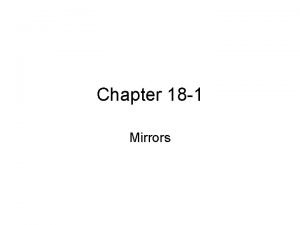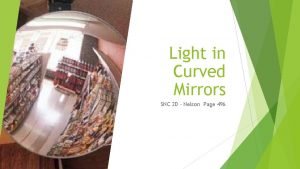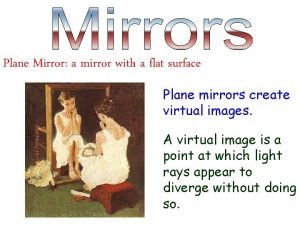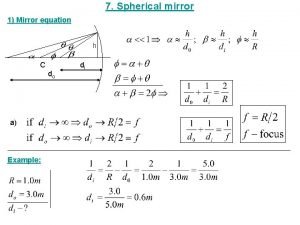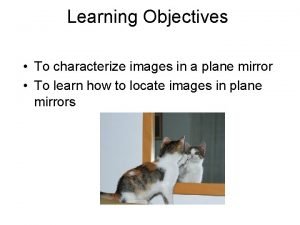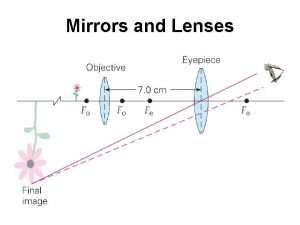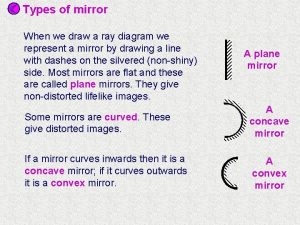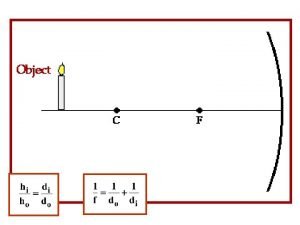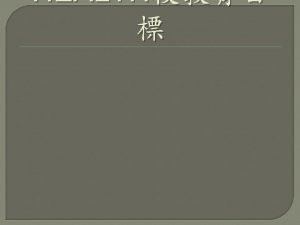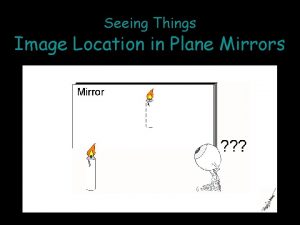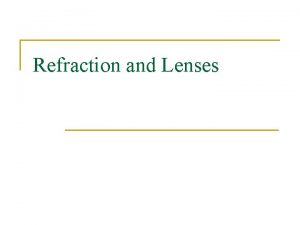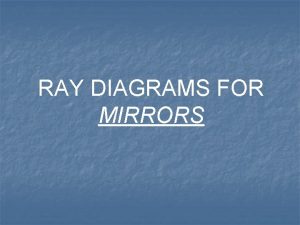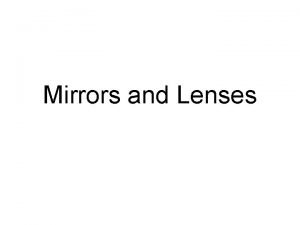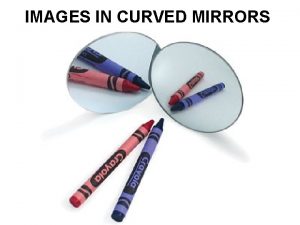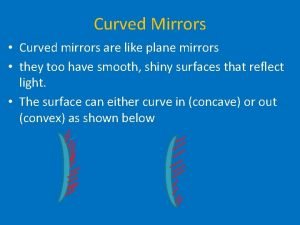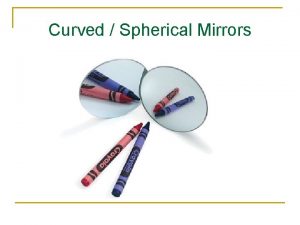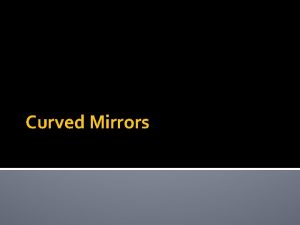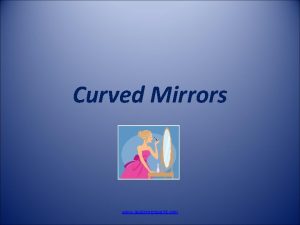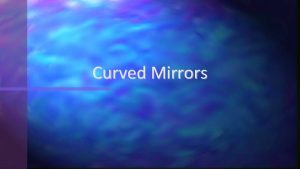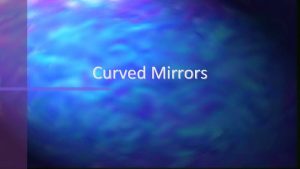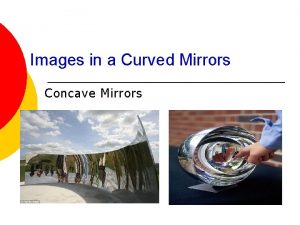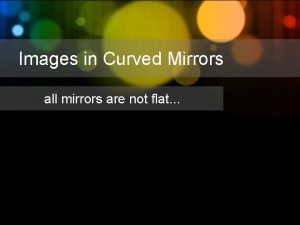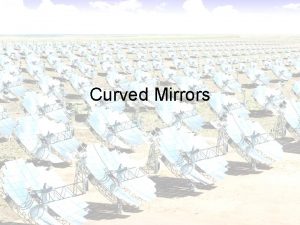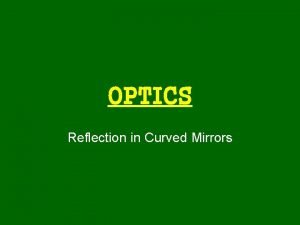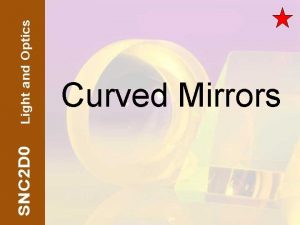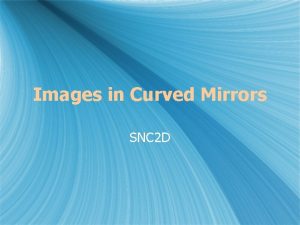4 4 IMAGES IN CURVED MIRRORS Types of

















- Slides: 17

4. 4 IMAGES IN CURVED MIRRORS

Types of Curved Mirrors: � Concave: � Inner � surface of curved mirror is reflective Convex: � Outer surface of curved mirror is reflective

Terminology � Centre of Curvature (C) � Centre of the sphere whose surface is used to make the mirror � Principal Axis (PA) � Line going through the centre of curvature and the centre of the mirror � Vertex (V) � Point where the principal axis intersects the mirror

� Focus (F) � The point where parallel light rays come together on a concave mirror. It is exactly halfway between C and V.

Real Image � � An image that can be seen on a screen as a result of light rays actually arriving at that particular location Video- Vital Science: Curved Mirrors


Locating Images in Converging (Concave) Mirrors � Draw two incident light rays from the top of the object 1. One parallel to the PA, then reflects through F 2. One through C, then reflects back upon itself � � The point where the two reflected rays intersect is where the image will form NOTE: you could use all four types of incident rays but only two are needed for a point of intersection

Object beyond C S- smaller A- inverted L- b/t F and C T- real

Object at C S- same A- inverted L- at C T- real

Object between F and C S- larger A- inverted L- beyond C T- real

Object at F -cannot run a ray through the focal point so run one through the centre of curvature - Reflected rays do not intersect as they are parallel. SA- *no clear L-image forms* T-

Object between V and F -extend reflected rays back behind mirror S- larger A- upright L- behind mirror T- virtual

Convex Mirror � � Light rays DIVERGE on the mirror and meet at a VIRTUAL FOCUS behind the mirror Large viewing area but can cause some distortion Used to view large areas like in a variety store Produce smaller upright virtual images

Reflection of a Convex Mirror 1. A ray parallel to the PA is reflected as if it had come through the focus 2. A ray aimed at the focus will reflect back parallel to the PA 3. A ray aimed at the centre of curvature is reflected back upon itself

S - smaller A – upright L – behind mirror T- virtual Object will always be in front of mirror and therefore image will ALWAYS be smaller, upright, behind mirror and virtual


V F C
 Plane concave and convex mirrors
Plane concave and convex mirrors Salt reflection acronym
Salt reflection acronym A mirror with a flat surface
A mirror with a flat surface What is the mirror equation
What is the mirror equation All images in plane mirrors are apex
All images in plane mirrors are apex A light ray traveling obliquely to a convex mirror axis
A light ray traveling obliquely to a convex mirror axis Uses of convex mirror
Uses of convex mirror Real image vs virtual
Real image vs virtual Hi
Hi Httpstw
Httpstw How to save images on google images
How to save images on google images Yahoo.com.yw
Yahoo.com.yw Flat plate collector with adjustable mirrors
Flat plate collector with adjustable mirrors Seeing things in the mirror
Seeing things in the mirror Mirror and lens equation
Mirror and lens equation Chapter 17 reflection and mirrors
Chapter 17 reflection and mirrors Image formed by plane mirror
Image formed by plane mirror Mirrors and lenses
Mirrors and lenses
